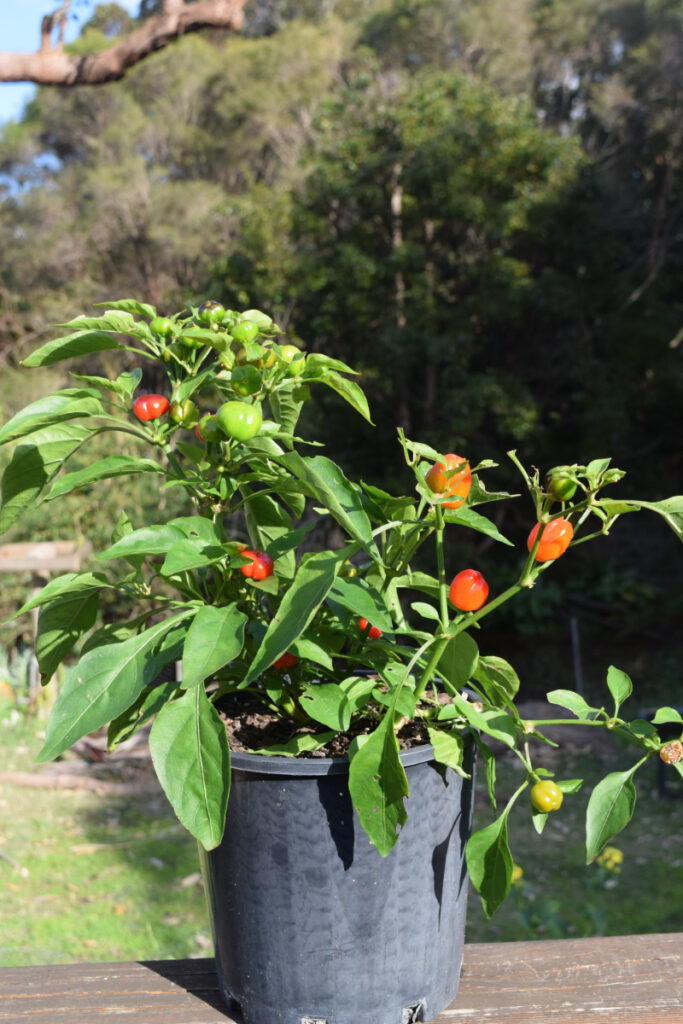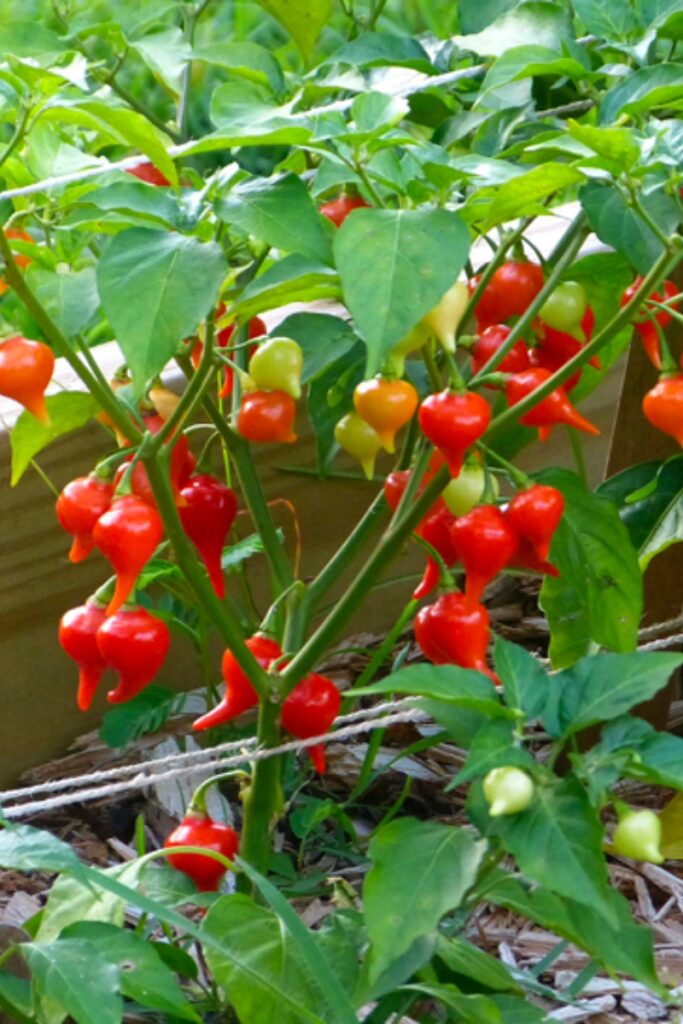Biquinho Peppers: Spice Up Your Garden Today!
As a gardening enthusiast, I’m always on the lookout for new and exciting additions to my home garden. Recently, I stumbled upon an intriguing Brazilian pepper variety called biquinho peppers. These little gems have been gaining popularity among gardeners and foodies alike, and for good reason!
Not only do they add a unique visual appeal to your garden, but biquinho peppers also offer a delightful burst of flavor and mild heat that can elevate your cooking to new heights. In this article, I’ll share my experience growing these delightful peppers and why you should consider adding biquinho peppers to your garden today.
Biquinho peppers, also known as “little beak” peppers due to their distinct shape, are a perfect addition to any garden, regardless of your gardening experience or the size of your space. Their attractive appearance, delicious taste, and versatility in the kitchen make them a must-have for anyone looking to spice up their garden and expand their culinary horizons.
So, let’s dive into the world of biquinho peppers and discover how you can grow, harvest, and enjoy these fantastic little peppers in your very own garden.
Biquinho Peppers: Spice Up Your Garden Today!

History and Characteristics of Biquinho Peppers
Biquinho peppers, scientifically known as Capsicum chinense, have their roots in Brazil, where they have been cultivated and enjoyed for generations.
Hailing from the rich culinary traditions of Brazil’s Minas Gerais region, these small, vibrant peppers have recently gained international attention for their unique appearance, flavor, and heat level.
The biquinho pepper plant is a bushy, medium-sized plant that typically grows to be around 2-3 feet tall. Its dark green leaves provide a striking contrast to the bright red or yellow peppers that dangle from its branches like little ornaments.
The fruit itself is small, measuring about 1-2 inches in length, with a rounded, teardrop shape that tapers to a point, resembling a tiny beak – hence the name “biquinho” or “little beak.”
What sets biquinho peppers apart from other chili varieties is their taste and heat level. While many people associate chilies with intense spiciness, biquinho peppers offer a more approachable heat that even those with a low tolerance for spice can enjoy.
With a Scoville rating of only 500-1,000 units, biquinho peppers are considered mild compared to other chili peppers, such as jalapeños (2,500-8,000 Scoville units) or habaneros (100,000-350,000 Scoville units).
But don’t let their mild heat fool you – biquinho peppers pack a punch when it comes to flavor! They have a fruity, slightly sweet taste with a hint of smokiness that adds depth and complexity to any dish they’re used in.
Growing Biquinho Peppers
Growing biquinho peppers in your home garden is a rewarding and relatively straightforward process. Follow this step-by-step guide to cultivate your own biquinho pepper plants and enjoy a plentiful harvest.
Start with seeds or seedlings
You can either purchase biquinho pepper seeds from a reputable supplier or start with seedlings from a local nursery. If you choose to begin with seeds, it’s best to sow them indoors 6-8 weeks before the last expected frost in your area.
Indoor germination
To germinate the seeds, place them in a seed tray filled with moist seed-starting mix. Cover the seeds lightly with the mix and maintain a consistent temperature of 75-85°F (24-29°C) for optimal germination. This can be achieved by using a seedling heat mat or placing the tray in a warm location. Keep the soil consistently moist but not overly wet. Seedlings should emerge within 7-21 days.
Provide light
Once the seedlings have emerged, ensure they receive adequate light – a minimum of 6 hours per day. Placing them near a sunny window or under grow lights will suffice.
Transplant outdoors: After the danger of frost has passed and the seedlings have developed at least two sets of true leaves, it’s time to transplant them outdoors. Gradually harden off the seedlings by exposing them to outdoor conditions for a few hours each day, gradually increasing the duration over a week.
Choose the right location
Biquinho peppers thrive in full sun and well-draining soil. Select a spot in your garden that receives at least 6-8 hours of sunlight per day. If you’re short on space, biquinho peppers can also be grown successfully in containers.
Prepare the soil
Amend your garden soil with compost or well-rotted manure to improve drainage and provide essential nutrients. Biquinho peppers prefer a slightly acidic to neutral soil, with a pH of 6.0-7.0.
Planting: Space the seedlings 18-24 inches apart in rows, or plant them in large containers with ample drainage holes. Water the plants thoroughly after transplanting.
Ongoing care
Biquinho pepper plants require consistent moisture, but be careful not to over-water, as this can lead to root rot. A layer of mulch around the base of the plants can help retain soil moisture and suppress weeds. Fertilize the plants with a balanced, slow-release fertilizer every 4-6 weeks, following the package instructions.
Pest and disease control
Keep an eye out for common pepper pests, such as aphids or whiteflies, and treat them promptly with insecticidal soap or neem oil. Regularly inspect your plants for signs of disease, such as yellowing leaves or stunted growth, and address any issues as needed.
Harvesting and Preserving Biquinho Peppers
Once your biquinho pepper plants have matured and produced fruit, it’s time to harvest and enjoy the fruits of your labor. Here’s how to harvest and preserve your biquinho peppers for long-lasting enjoyment:
Timing the harvest
Biquinho peppers typically take 75-90 days from transplanting to reach maturity. The peppers will change color from green to red or yellow as they ripen. For the best flavor, allow the peppers to fully ripen on the plant before harvesting. However, you can also pick them when they’re still green if you prefer a slightly milder taste.
Harvesting technique
To harvest your biquinho peppers, use a sharp pair of scissors or pruning shears to cut the stem about half an inch above the fruit. This helps prevent damage to both the plant and the pepper. Be sure to wear gloves if you’re sensitive to capsaicin, the compound responsible for the heat in chili peppers.
Preserving methods
Once you’ve harvested your biquinho peppers, there are several ways to preserve them for future use:
- Drying: Spread the peppers out on a wire rack or hang them in a well-ventilated location away from direct sunlight. Allow them to air-dry until completely dehydrated, which can take several weeks. Once dried, store the peppers in an airtight container.
- Freezing: Rinse and dry the peppers, then spread them out on a baking sheet lined with parchment paper. Place the sheet in the freezer for several hours or until the peppers are frozen solid. Transfer the frozen peppers to an airtight container or freezer bag for long-term storage.
- Pickling: Prepare a pickling brine by combining equal parts water and vinegar, along with salt and any desired spices (such as garlic, dill, or mustard seeds). Bring the brine to a boil, then pour it over the washed and trimmed biquinho peppers in a sterilized jar. Seal the jar and refrigerate for at least one week before consuming.
Cooking with preserved biquinho peppers
Preserved biquinho peppers can be used in a variety of delicious recipes, from appetizers to main dishes. Dried peppers can be rehydrated by soaking them in warm water, while frozen peppers can be used directly in cooked dishes. Pickled biquinho peppers are excellent as a tangy, spicy addition to salads, sandwiches, and charcuterie boards.
Health Benefits of Biquinho Peppers
In addition to their unique flavor and heat, biquinho peppers also offer numerous health benefits. They are packed with essential vitamins, minerals, and antioxidants that can contribute to overall wellness. Here are some key health benefits of biquinho peppers:

Rich in vitamins
Biquinho peppers are an excellent source of vitamin C, which is essential for immune system support, collagen production, and iron absorption. They also contain vitamin A, which supports healthy vision, skin, and mucous membranes, as well as B vitamins that help maintain energy levels and support brain function.
High in minerals
Biquinho peppers provide a good amount of potassium, which helps regulate blood pressure and fluid balance, and magnesium, which is important for nerve function, muscle relaxation, and bone health.
Packed with antioxidants
Biquinho peppers contain carotenoids and flavonoids, which are powerful antioxidants that help protect your body from oxidative stress and may reduce the risk of chronic diseases, such as heart disease and certain types of cancer.
Anti-inflammatory properties
Capsaicin, the compound responsible for the heat in chili peppers, has been shown to possess anti-inflammatory and pain-relieving properties. Although biquinho peppers are relatively mild compared to other chili varieties, they still contain small amounts of capsaicin that may contribute to these health benefits.
Aid in weight management
The capsaicin in biquinho peppers has been linked to increased metabolism and fat burning, which could potentially aid in weight management when combined with a healthy diet and regular exercise.
Potential digestive benefits
Some research suggests that capsaicin may have a positive effect on gut health by promoting the growth of beneficial gut bacteria and reducing inflammation in the digestive tract. However, more studies are needed to confirm these findings.
Conclusion
Biquinho peppers are a unique and flavorful addition to any home garden, offering a delightful combination of taste, visual appeal, and health benefits. Their mild heat and fruity, smoky flavor make them a versatile ingredient in a wide range of dishes, from salsas and hot sauces to pasta and pizza.
Growing biquinho peppers is a relatively simple process, suitable for both beginner and experienced gardeners. By providing the right conditions and care, you can cultivate a bountiful harvest of these vibrant peppers to enjoy throughout the season and beyond.
With their rich history, distinct characteristics, and numerous culinary applications, biquinho peppers have earned their place among the world’s most beloved chili varieties. So why not give these little beak peppers a try and add a touch of Brazilian flair to your garden and kitchen? Happy gardening and bon appétit!